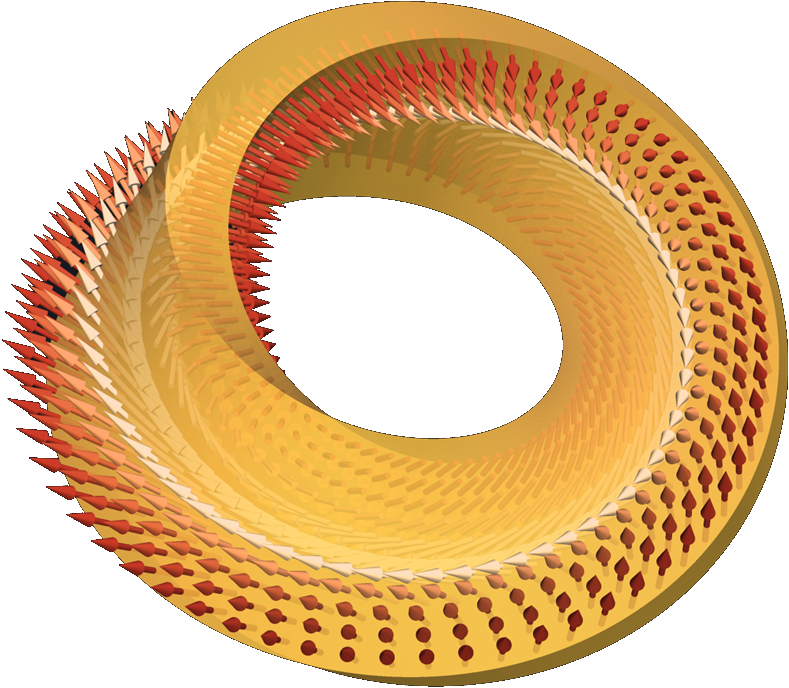Speaker
Description
The standard spin state of antiferromagnets (AFM) contains two magnetic sublattices with equivalent spins $s_1$ and $s_2$, magnetized in the opposite direction such that $s_1+s_2=0$ in the ground state. For their description, so-called Neel vector $l= (s_1-s_2)/|s_1-s_2|$ is used. This kind of ordering is sensitive to crystal lattice dislocations, which destroy the sublattice structure of a perfect antiferromagnet such that $s_1\to s_2$ and $s_2\to s_1$ after a passing around the dislocation along a simple closed counter. Lattice dislocations can be treated as a destruction of the “ideal” geometry and even topology of the atomic planes in a crystal, may give rise to an inhomogeneous spin distribution [1, 2]. Both edge dislocation (atomic plane, broken along some line) and screw dislocation (atomic plane of the form of the Riemann surface for the function $w=z^\nu$ with irrational $\nu$) are the origin of the singular line in the field of the Neel vector $l$. This line is common to the disclinations in the field of vector-director $n$ for nematic liquid crystals: the vector $l$ changes its sing when passing around the AFM disclination line. Spin disclinations were observed in thin films of chromium [3]. For a layered antiferromagnet with a screw dislocation, spin disclination have a macroscopic-sized ferromagnetic core [4].
The review of the static and dynamic properties of the spin non-uniform states caused by different non-ideal topology of the atomic planes of the crystal lattices is done. Single atomic dislocation produces spin disclination, whereas a “compensated” system of dislocations, closed dislocation loop in 3-dimensional (3D) AFM or pair of dislocations loop in 2D AFM produces localized non-uniformity (singular droplet soliton) of the Neel vector. For easy-plane AFM with the form of these solitons is spherical or circular in 3D or 2D cases, accordingly, but it transforms to the ellipsoidal in the presence of in-plane anisotropy. The dynamical solitons with the precession of the Neel vector (e.g., excited by the spin transfer torque) are also possible.
[1] I. E. Dzyaloshinsky, JETP Lett. 25, 98 (1977)
[2] A. S. Kovalev and A. M. Kosevich, Sov. J. Low Temp. Phys. 3, 125 (1977)
[3] M. Kleiber, M. Bode, R. Ravlic, and R. Wiesendanger, Phys. Rev. Lett. 85, 4606 (2000)

